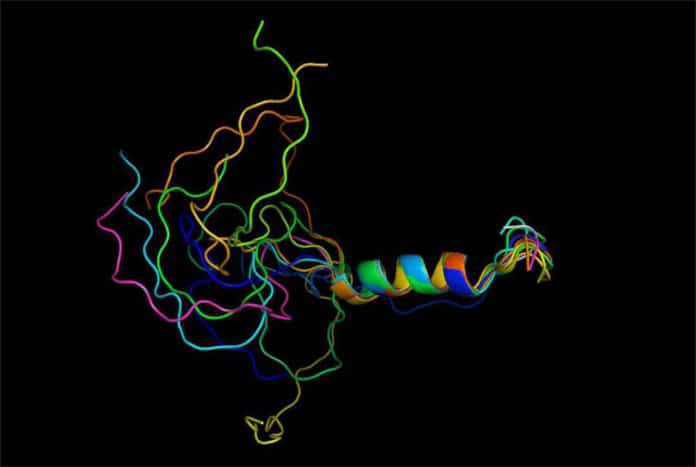In a new study, scientists used a combination of theory, experiment, and simulation to read patterns on long chains of molecules to understand and predict the behavior of disordered strands of proteins and polymers. The work offers detailed insights on the physics behind the precise sequence of charged monomers along the chain and how it affects the polymer’s ability to create self-assembling liquid materials called complex coacervates.
The study was conducted by the team of researchers from the University of Illinois at Urbana-Champaign and the University of Massachusetts Amherst.
The theory for this work was provided by the lab of Charles Sing, assistant professor of chemical and biomolecular engineering at Illinois and then verified through experiments conducted in the lab of Sarah Perry, assistant professor of chemical engineering at UMass Amherst, and Illinois alumni.
Sing said, “The thing that I think is exciting about this work is that we’re taking inspiration from a biological system. The typical picture of a protein shows that it folds into a very precise structure. This system, however, is based around intrinsically disordered proteins.”
“Our earlier paper showed that these sequences matter, this one shows why they matter. The first showed that different sequences give different properties in complex coacervation. What we’re able to now do is use a theory to actually predict why they behave this way.”
“They found that despite this fact, the precise sequence of the monomers along with a protein (the amino acids) really does make a difference. It has been obvious to biophysicists that sequence makes a big difference if they are forming a very precise structure. As it turns out, it also makes a big difference if they are forming imprecise structures.”
“Even unstructured proteins have a precision associated with them. Monomers, the building blocks of complex molecules, are the links to the chain. What we found is that by knowing the sequence of polymers and monomers and the charge (positive, negative or neutral) associated with them, one can predict the physical properties of the complex molecules.”
The study shows that you can actually change its strength by changing its sequence. Changing the sequence even by single monomer can change the formation of these things. What’s more, predicting the outcome would be easy.
Sing said, “This information is valuable to biophysicists, bioengineers and material scientists alike. This discovery will help engineers understand a broad class of proteins and tune proteins to modify their behavior. It gives them a new way to put information into molecules for building new materials and make a better guess as to how these properties behave.”
The study is published in the journal ACS (American Chemical Society) Central Science.
